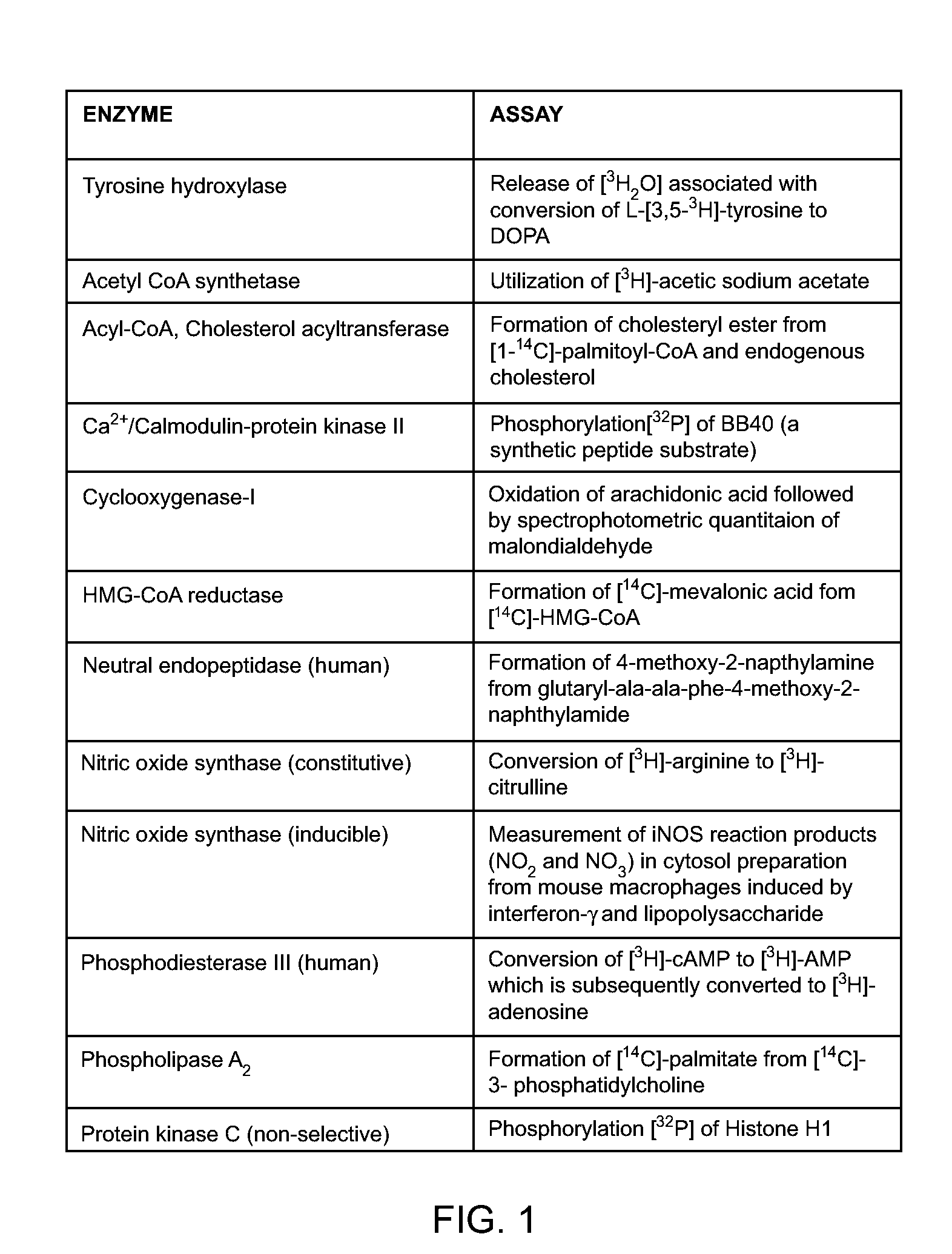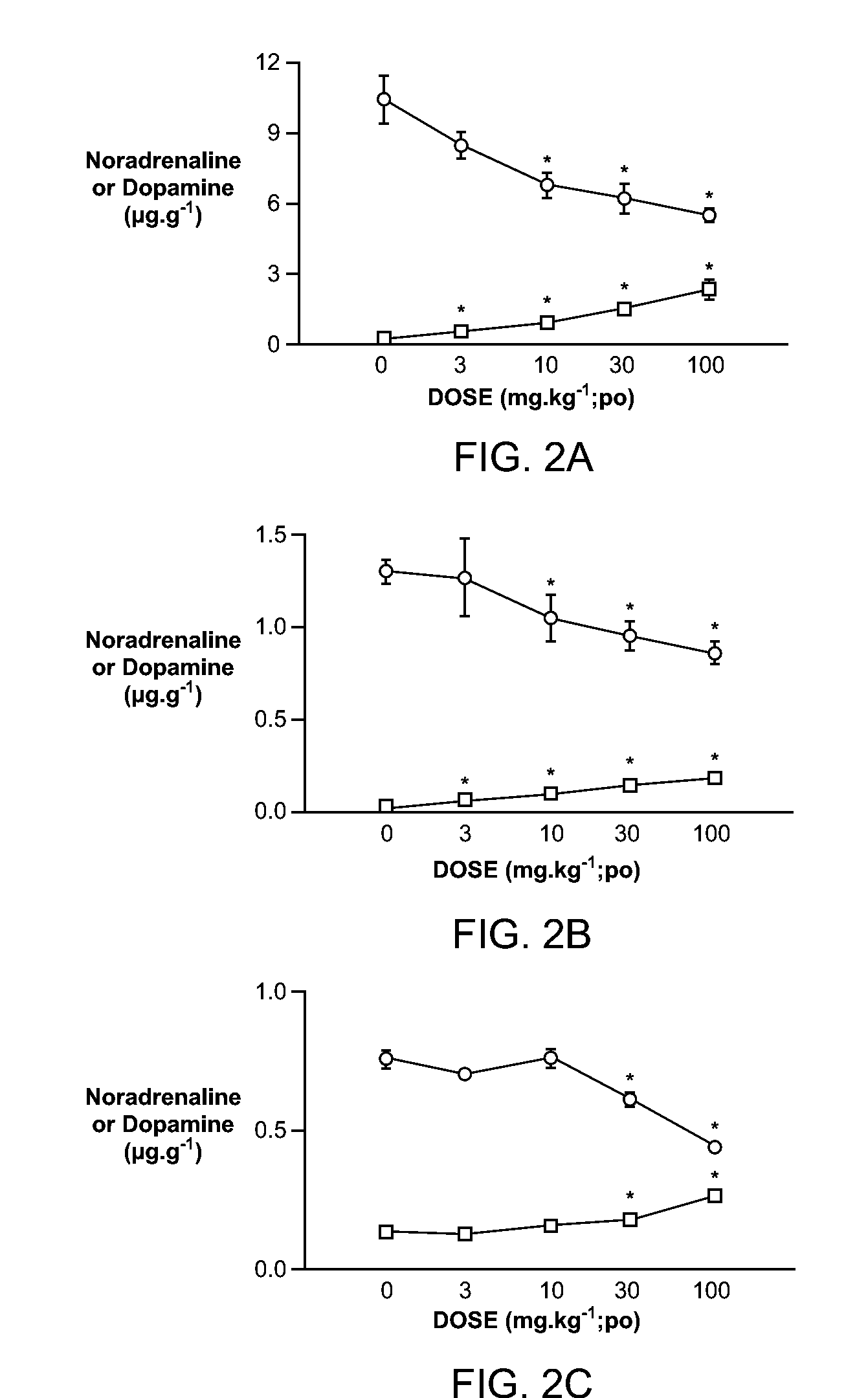Treatment of Post-Traumatic Stress Disorder
a post-traumatic stress disorder and treatment method technology, applied in the field of treatment of post-traumatic stress disorder, can solve the problems of preventing a return to normal life, low patient tolerance, unwanted side effects and characteristics
- Summary
- Abstract
- Description
- Claims
- Application Information
AI Technical Summary
Benefits of technology
Problems solved by technology
Method used
Image
Examples
example 1
[0357]A clinical study is performed to demonstrate the efficacy and tolerability of Compound A in the treatment of post-traumatic stress disorder (PTSD).
[0358]The research design includes an 8-week randomized, double-blind, placebo-controlled treatment trial of Compound A for the treatment of PTSD. After signing an informed consent and meeting inclusion / exclusion criteria, patients are randomized to receive either Compound A or placebo for the 8-week duration. During the study a pharmacist maintains the randomization log and verify the order for the placebo or Compound A in look-a-like tablets. Patients' symptoms, side effects and compliance is assessed bi-weekly.
[0359]Based on symptomatology and occurrence of side effects, the investigator may increase the medication in 20-40 mg increments, as tolerated, until a maximum therapeutic benefit is achieved. The dosing is once per day unless twice per day is better tolerated. Compliance is assessed by pill count at week 4 and week 8.
[036...
example 2
[0395]A clinical study is performed to demonstrate the efficacy and tolerability of Compound A in the prevention of PTSD.
[0396]The research design includes an open-ended randomized, double-blind, placebo-controlled treatment trial of Compound A for the prevention of PTSD. After signing an informed consent and meeting inclusion / exclusion criteria, patients are randomized to receive either Compound A versus placebo for the 8-week duration. During the study a pharmacist maintains the randomization log and verify the order for the placebo or Compound A in look-a-like tablets. Patients' symptoms, side effects and compliance are assessed bi-weekly.
[0397]Based on symptomatology and occurrence of side effects, the investigator can increase the medication in 20-40 mg increments, as tolerated, until a maximum therapeutic benefit is achieved. The dosing is once per day unless twice per day is better tolerated. Compliance is assessed by pill count at week 4 and week 8.
[0398]Patients are given s...
example 3
[0435]A clinical study is conducted to demonstrate the efficacy and tolerability of Compound A combination therapy in the treatment of PTSD.
[0436]The research design includes an 8-week randomized, double-blind, placebo-controlled treatment trial of Compound A for the treatment of PTSD. After signing an informed consent and meeting inclusion / exclusion criteria, the patient is randomized to receive either Compound A or placebo for 8-week duration. Patients can also receive therapeutically effective doses of prazosin, valproate, carbamazepine, or topiramate in combination with Compound A or placebo.
[0437]During the study a pharmacist maintains the randomization log and verifies the order for the placebo or Compound A in look-a-like tablets. Patients' symptoms, side effects and compliance is assessed bi-weekly. Based on symptomatology and occurrence of side effects, the investigator increases the medication in 20-40 mg increments, as tolerated, until a maximum therapeutic benefit is ach...
PUM
| Property | Measurement | Unit |
|---|---|---|
| pH | aaaaa | aaaaa |
| volume | aaaaa | aaaaa |
| flow rate | aaaaa | aaaaa |
Abstract
Description
Claims
Application Information
 Login to View More
Login to View More - R&D
- Intellectual Property
- Life Sciences
- Materials
- Tech Scout
- Unparalleled Data Quality
- Higher Quality Content
- 60% Fewer Hallucinations
Browse by: Latest US Patents, China's latest patents, Technical Efficacy Thesaurus, Application Domain, Technology Topic, Popular Technical Reports.
© 2025 PatSnap. All rights reserved.Legal|Privacy policy|Modern Slavery Act Transparency Statement|Sitemap|About US| Contact US: help@patsnap.com



